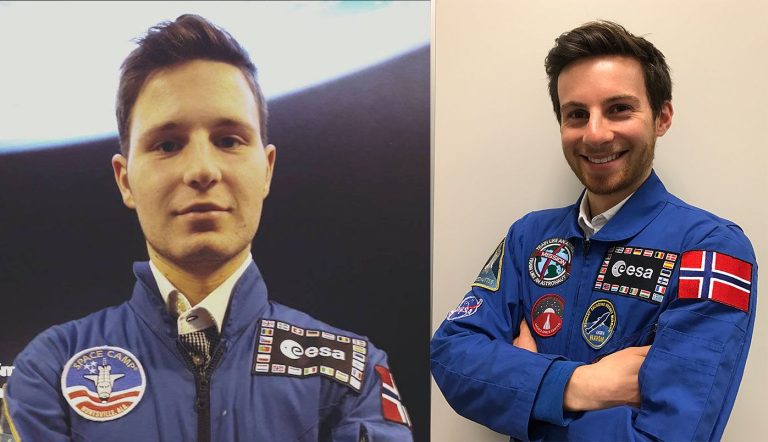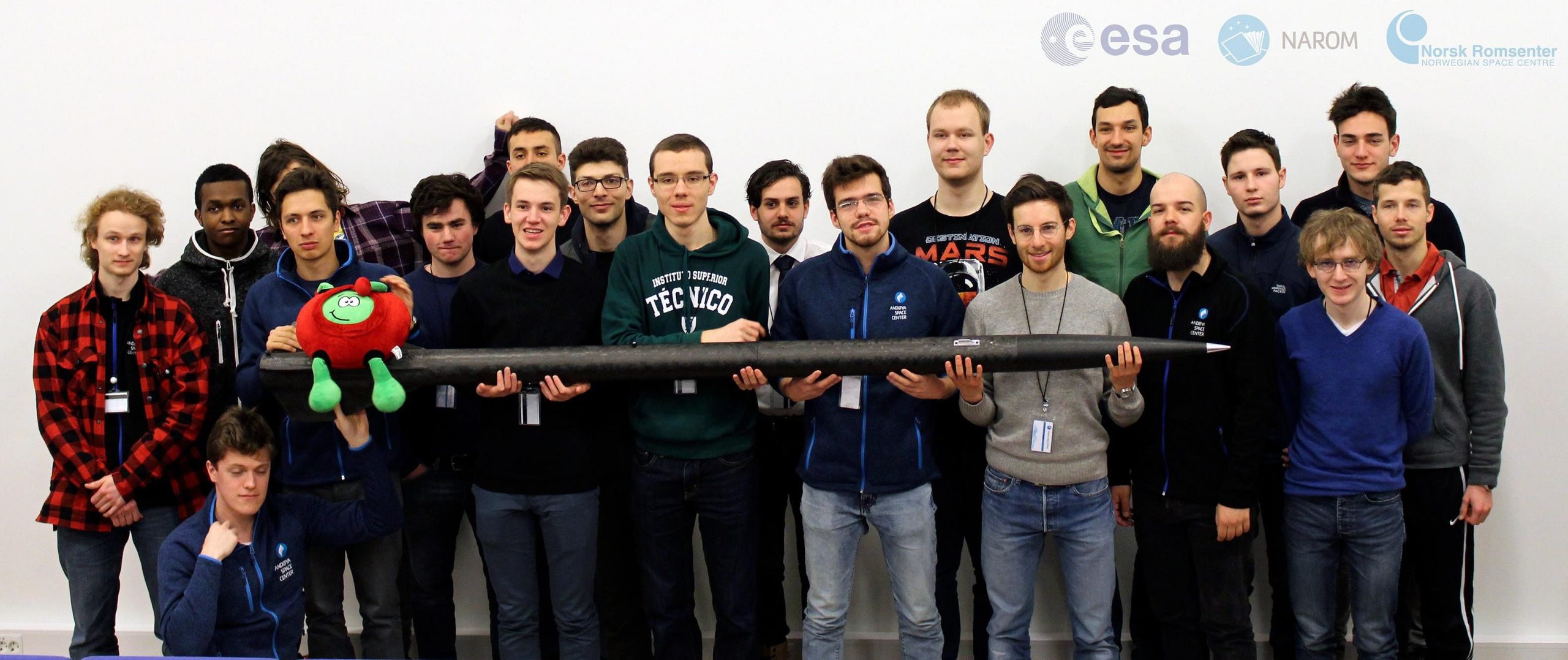Imagine being 300 kilometres inside the Arctic circle building and launching a sounding rocket. TU students Vasileios Zygouris and Killian Dally did exactly that. Well, not exactly. Here’s their story.
Imagine being 300 kilometres inside the Arctic circle. Before you, the rough Norwegian Sea. Behind you, the snow-capped Ramnan mountain, standing proud against the tempestuous arctic weather.
Google Maps puts you at 696΄Ν 1543΄Ε. You are at the Andoya Space Center in the Vesteralen archipelago, Norway’s northernmost territory. You are about to build and launch a sounding rocket.
Life changing experience
These were the first thoughts of Vasileios, or Vassilis, Zygouris and Killian Dally, first-year students of Aerospace Engineering at TU Delft, when they found themselves at the northern tip of Europe as part of the European Space Agency’ (ESA) ” Fly A Rocket!” campaign.
Last October, Vassilis and Killian were among 500 first and second-year university students from Europe and Canada to apply for ESA Educational Office’s brand new online rocketry course. The course would end with building and launching a sounding rocket at the Andoya Space Center (ASC) in Norway. Ultimately, twenty students from ESA’s 22 Member and Cooperating States were selected for the “Fly A Rocket!” pilot project.
Project
The project is a collaboration between the Norwegian Centre for Space-related Education (NAROM) and the Norwegian Space Centre (Norsk Romsenter). ESA’s long-term objective is to ensure Europe’s leadership in space activities through stimulating young people with knowledge of and love for space, who want the challenge of working in science, technology, engineering and mathematics.
The “Fly A Rocket!” project ran from March 27-30, culminating in the launch of the “Volare 1″ (‘to fly’ in Italian) rocket. Before that, Vassilis and Killian had completed online course assignments covering the principles of rocket flight, satellite dynamics and the use of satellites as tools for Earth observation, and they had chosen their working groups. Vassilis chose the ” Science” group – responsible for the science around the rocket, weather balloons and the feasibility of the rocket launch. Killian chose the “Rocket Physics” group, which concentrated on the launch simulation, the flight physics, and operational conditions including countdown procedures, holds and wind effects.
Experimenters
There were three other groups: ” Experimenters“, which would make some of the sensor cards for the payload, set up a visual decoding system and present the after-launch data; “Payload“, which would be responsible for assembling and testing the payload functionality (instrument sensors, encoder and transmitter); and “Telemetry“, whose tasks included getting good quality signals from the rocket back to the ground for later analysis.
On March 26 th, the students met their teammates for the first time at the ASC. A life changing experience was about to begin.


All twenty students threw themselves into every aspect of the space programme. They were trained by ESA and NAROM experts and lecturers, and ASC staff throughout the project. After joining their teams, each team learned the tasks they were to execute, from assembling the payload and calibrating the communication equipment, to analysing trajectories and the parameters associated with the rocket, before and after the launch.
On the first and second day, there were lectures on rocket science and principles, from electronics and systems to propulsion and atmospheric physics, and a demonstration of a hybrid engine. The group work sessions then started on preparing the rocket for launch. Unfortunately, strong winds at high altitude meant that the rocket launch was cancelled.
Interaction
Apart from the academics, interaction was a significant component of the programme. Restaurant dinners, informal gatherings, and sharing experiences and dreams till dawn. The participants interacted and created shared memories, unforgettable for the rest of their lives.
By the end of the campaign, the students had experienced being members of a rocket launch team, from construction to launch, and experienced unforeseen situations such as the postponement of a launch.
Luckily, the disappointment of the launch cancellation was well compensated. That same night during a gathering in the Space Centre’s living room, someone shouted the word everyone had been longing to hear: “AURORA!”. Within seconds everyone was outside in the cold, arctic night, watching the magical Northern Lights dance before their eyes. That was definitely the cherry on the cake! An indescribable unique experience. Awestruck, peace descended despite not launching the rocket that day.
On the last day, the students were introduced to the world of ASC’s ALOMAR Observatory (Arctic Lidar Observatory for Middle Atmosphere Research), the world´s northernmost launch site for sounding rockets. Its instrumentation covers all atmospheric layers, from the troposphere to the lower thermosphere. ALOMAR’s clients include ESA, NASA, JAXA, universities and institutes.


That day, the strong winds above ASC did not subside, grounding the “Fly A Rocket!” campaign’s first student rocket. After leaving Norway though, the students were thrilled to hear that the ESA Education Office, NAROM and the ASC scientists may launch “Volare 1” at a later date in May and that they could watch it live and get the telemetry data. That was music to everybody’s ears!
Later, ESA uploaded an article about how the students learned perseverance during the programme. But that was only one of the many valuable things that the students learned during the “Fly A Rocket!” campaign. Beyond any doubt, the campaign was one of the most interesting and memorable experiences for them, and is shaping them as university students and defining their future as scientists.


Vasileios, or Vasilis, Zygouris and Killian Dally are first-year students at the Faculty of Aerospace Engineering, TU Delft. They wrote this article and made the video as part of the Delta Lab, the Delta platform for students and employees.



Comments are closed.